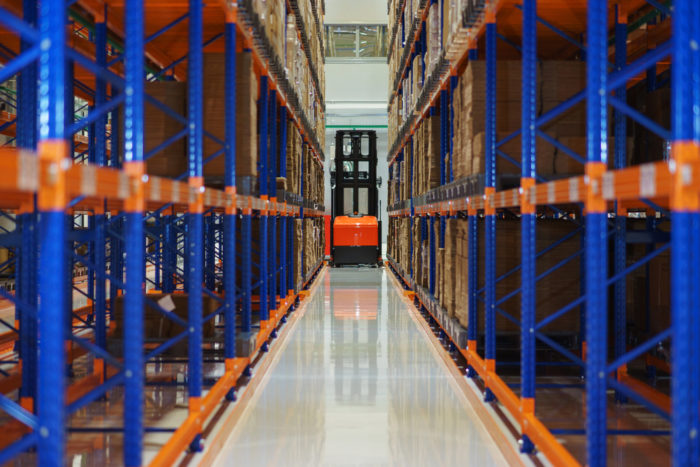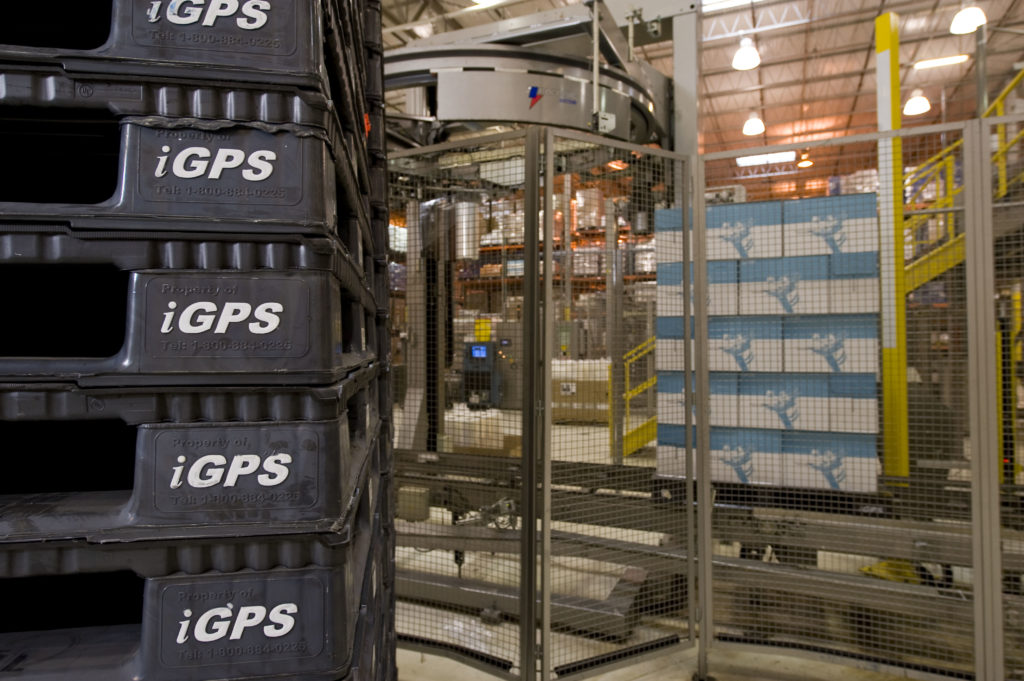ARTICLE UPDATED ON JUNE 29, 2023
Pallet Storage Methods in the Warehouse that Optimize Space
Warehouses and fulfillment centers face extreme pressure to operate seamlessly while keeping up with consumers’ growing demand. To streamline processes, many fulfillment centers are implementing solutions that include automated systems, lean warehousing principles, and warehouse robotics. Facility managers can also boost optimization by implementing appropriate pallet storage methods. This doesn’t just save space on the floor, but can also cut back on energy costs, streamline labor efforts, ensure workers’ safety, and reduce an enterprise’s Total Cost of Business (TCOB). There are numerous methods for warehouse space management to consider, and supply chain managers should familiarize themselves with the top options to arrive at the best possible choice.
Common Pallet Storage Methods in the Warehouse

A pallet storage method involves the process by which a warehouse stores their inventory in the most appropriate way. This is vital, because when it is not done effectively, it can lower productivity, damage goods, and have other costly consequences.
Pallet storage methods in the warehouse and distribution centers will differ based on the industry and whether a first-in, first-out (FIFO) or last-in, first-out (LIFO) approach is needed. FIFO methods are typically best for time-sensitive storage of perishable products, while LIFO methods are better for high-density storage situations. Throughout the industry, we can encounter a variety of systems and approaches:
| Type | Description/Use | Pros | Cons |
| Automated Storage and Retrieval Systems | Often used by very larger distribution centers, automated storage and retrieval systems are designed to maximize space. |
|
|
| Block stacking | Block stacking is a very basic form of pallet storage in which loaded pallets are stacked on top of each other and organized into lanes. This method is typically best when there are minimal pallets to store and little time to manage them. |
|
|
| Stack racks | Decks and posts create racks for holding pallets. Stacking frames can hold overflow pallets during busy periods. Stack racks work well for warehouses with high ceilings. |
|
|
| Single deep pallet racking | This is an extremely common form of pallet storage that allows managers to access all the pallets in a rack, as the pallets each have their own individual space. This method is a particularly popular option in distribution centers. |
|
|
| Double deep pallet racking | Double deep racking expands on a single deep configuration with back-to-back pallet rows. These are particularly good configurations for high-density warehouses. |
|
|
| Gravity flow pallet rack | This high-density storage system is ideal for distribution centers where automation is favored. It stores pallets multiple layers deep, improving cube utilization. |
|
|
| Drive-in rack | In this system, forklifts drive directly into the racking setup to retrieve pallets. This method is ideal for high-density situations where products stored are identical. |
|
|
| Push back rack | Push back racks combine high-density storage with selection abilities by providing a static rack structure with carts that move along rails. |
|
|
These storage methods are primarily designed for handling loaded pallets, but most facilities will also need to consider storage for empty pallets. Extra pallets may be needed for peak times of the year but otherwise sit unused, taking up space year-round. Fortunately, there are numerous methods for storing idle pallets. One approach is to reduce the number of pallets your facility must store in the first place — by switching from an owned pallet fleet to a more efficient pallet pooling model. .
Leveraging Pallet Pooling as a Space Saver
Pallet pooling allows supply chain managers reduce the expense and headaches of transporting, storing, and maintaining empty pallets. Since pallet pooling is a leasing system in which pallets are rented rather than owned, managers can adjust supply as needed. Storing fewer empty pallets allows logistics planners to free up both facility and truck space for inventory, rather than transporting and storing large amounts of idle assets.
Pooled plastic pallets, offer a particular slew of advantages that make virtually any pallet storage method safer and more effective. Plastic pallets move along rails and roller racks more easily than wood-block pallets, and will not shed nails and create splinters that might clutter facilities and damage equipment. Plastic pallets are also less likely to fail and cause obstructions within high-density storage systems, which might require a time-consuming manual intervention to fix. Finally, plastic pallets are lightweight (but just as strong as wood) and easy for employees and equipment to handle, reducing employee injuries and machinery wear and tear. Combined, these advantages increase throughput and efficiency while reducing product damage and the risk of injury.
Whether you use gravity flow racking or block stacking, partnering with a plastic pallet pooling company can increase the efficiency of a warehouses pallet storage method and reduce the number of idle pallets your facility must store at any given time. As a result, managers can reduce their total cost of business while making the most of their facility space.
Companies looking to streamline their pallet storage method use iGPS plastic pallets, which are lightweight, recyclable, and help streamline your supply chain. For more information, contact us at 1-866-557-0047, email a specialist at [email protected], or visit our contact page.





